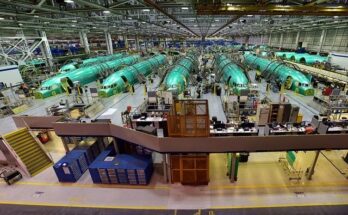By Ray Jaworowski, Senior Aerospace Analyst, Forecast International.
Fresh off a corporate reshuffle, Bombardier’s new management team is utilizing this year’s Paris Air Show as a high-visibility platform to show the world that flight testing of its all-new CSeries commercial airliner is displaying performance results that are better than had been initially targeted by the company. Bombardier says that flight testing has indicated that both the CS100 and CS300 variants are exceeding their original targets for fuel burn, payload, range, and airfield performance. For instance, Bombardier notes that the CSeries is delivering an improvement of more than 20 percent in fuel burn compared to current in-production aircraft in its class.
Operating efficiencies of that magnitude are intended to capture the attention of more than a few airlines in an era that sees carriers scrambling for even very slight reductions in operating costs. Nevertheless, though improving recently, orders for the CSeries have tended to come in fits and starts. Part of the buyer hesitation regarding the CSeries likely comes from the fact that the aircraft is an ambitious, clean-sheet design from a manufacturer looking, in part, to take on the established Airbus/Boeing duopoly at the lower end of the narrowbody airliner market. The fact that flight tests are bearing out many of the claims made by Bombardier regarding its new aircraft could help unlock some of that hesitation. Nevertheless, Bombardier has a difficult task ahead of it if it hopes to capture more than a small slice of the narrowbody market, which is thoroughly dominated by the Big Two of Airbus and Boeing.
Bombardier said in Paris that it is already looking to build on the CSeries’ better-than-expected fuel burn performance by a further improvement of 4 percent via an upgrade package currently in development. The upgrade is scheduled to be available in 2018.
The CSeries is a family of 100-160 passenger aircraft positioned by Bombardier to span the top end of the regional jet market and the lower end of the narrowbody segment. At this writing, Bombardier has garnered 243 firm orders for the CSeries, and the company hopes to increase the total to at least 300 by the time the CS100 enters service later this year. Bombardier management also said at the Paris show that the firm is continuing to consider development of a larger CSeries variant. Such a model, which at 160-180 seat capacity would bring Bombardier even further into direct competition with Airbus and Boeing, might receive the designation CS500, a name that recently was re-registered as a trademark by the Canadian company.
A military history enthusiast, Richard began at Forecast International as editor of the World Weapons Weekly newsletter. As the Internet grew in importance as a research tool, he helped design the company's Forecast Intelligence Center and currently coordinates the EMarket Alert newsletters for clients. Richard also manages social media efforts, including two new blogs: Defense & Security Monitor, covering defense systems and international issues, and Flight Plan, which focuses on commercial aviation and space systems. For over 30 years, Richard has authored the Defense & Aerospace Companies, Volume I (North America) and Volume II (International) services. The two books provide detailed data on major aerospace and defense contractors. He also edits the International Contractors service, a database that tracks all the contractors involved in the programs covered in the FI library. More recently he was appointed Manager, Information Services Group (ISG), a new unit that encompasses developing outbound content for both Forecast International and Military Periscope.



